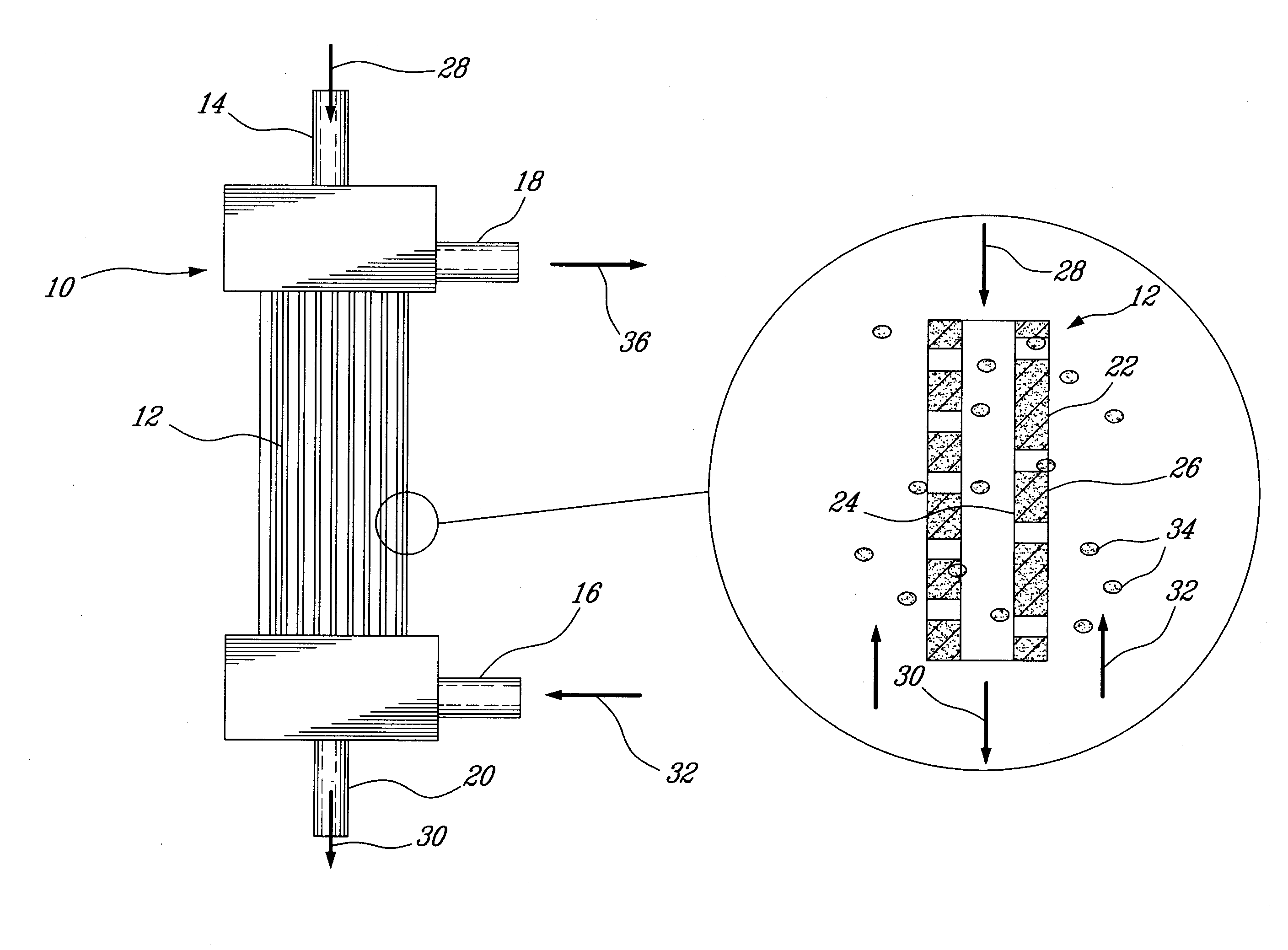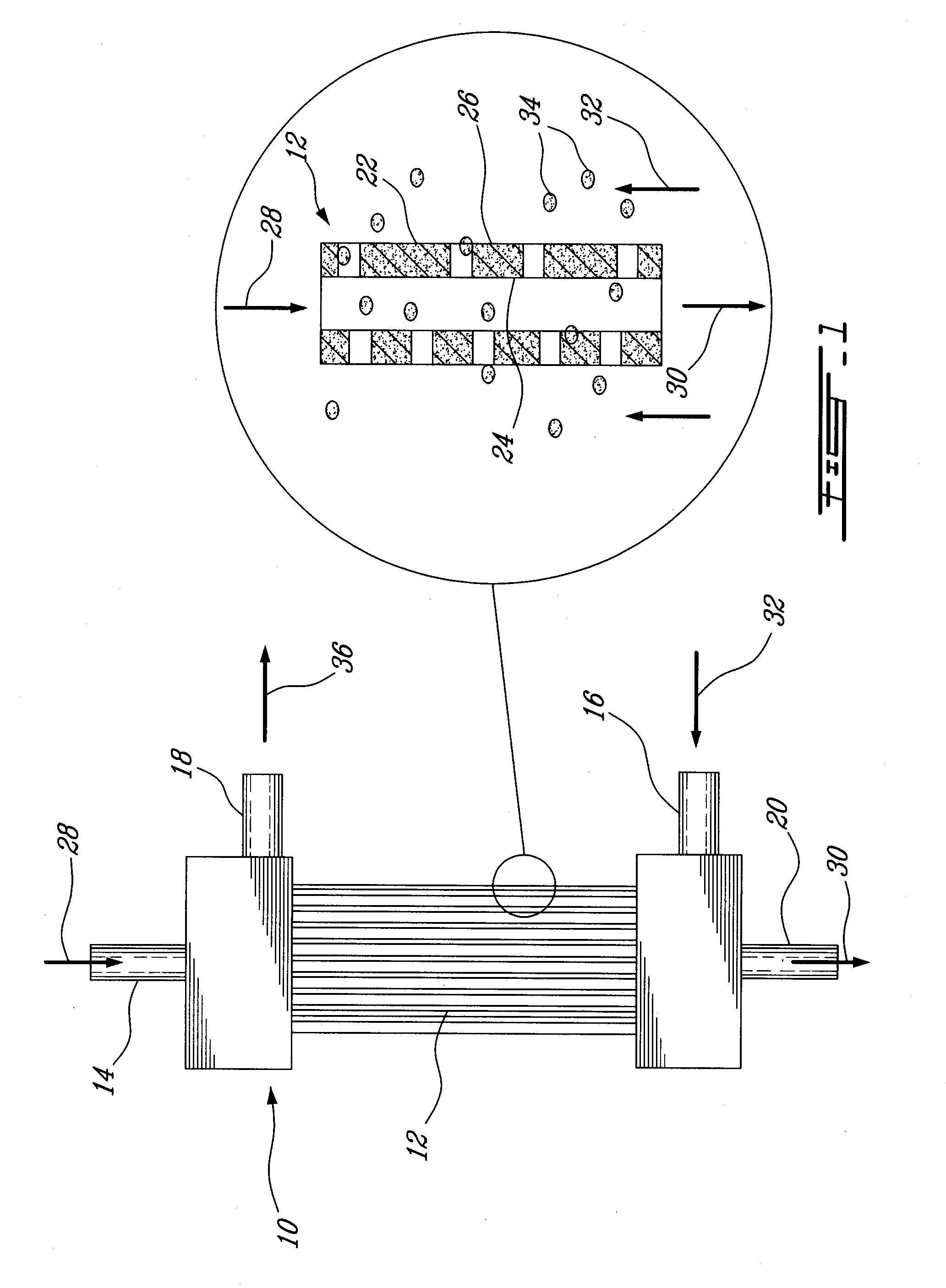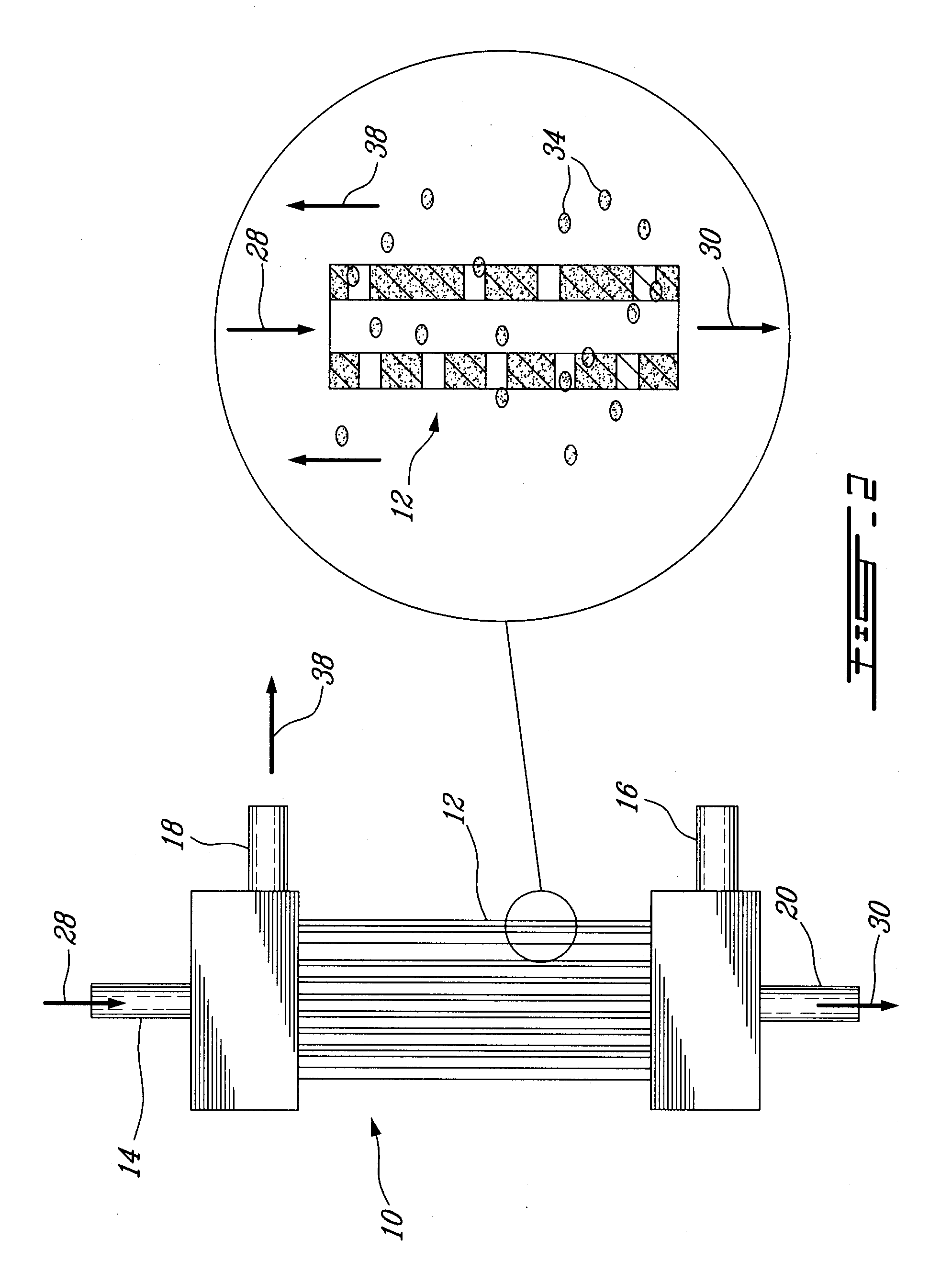Process for treating pulp mill condenstates using a hollow fiber contactor
a technology of contactor and pulp mill, which is applied in the direction of pulp liquor regeneration, waste water treatment from plant processing, membranes, etc., can solve the problems of steam stripping, odour problems, and operation problems, and achieve the effect of reducing the number of odours
- Summary
- Abstract
- Description
- Claims
- Application Information
AI Technical Summary
Problems solved by technology
Method used
Image
Examples
example 1
TRS and Methanol Removal from Kraft Pulp Mill Digester Condensate
[0050]The hollow fiber contactor used in this work was about half an inch in diameter and about 11 inches long. It contained about 3600 fibers made out of polypropylene. Each fiber had an outside and an inside diameter of 300 and 220 microns, respectively. The effective surface area based on the outside diameter was about 0.7 m2. The contactor is available commercially through several suppliers such as Celgard Inc. (Charlotte, N.C.). These fibers are hydrophobic and hence, only hydrophobic compounds diffuse into the hollow fiber membrane pores, and water molecules as well as other hydrophilic compounds are mostly excluded.
[0051]A hollow fiber contactor, as described above, was used to remove TRS compounds and methanol from a kraft pulp mill digester condensate. The pH of the solution was lowered to about 6.0 by the addition of sulfuric acid. The condensate was heated to 60° C. and pumped through the membrane contactor....
example ii
Treatment of Methanol-Rich Stripper-Off Gas Condensate
[0052]As mentioned earlier, cooling the stripper-off gases will yield a solution rich in methanol but contaminated with TRS compounds. Removing these TRS compounds would enable the use of the concentrated methanol in the chlorine dioxide generator in place of purchased methanol. A sample of this methanol-rich solution was obtained from a hardwood (HW) kraft mill. The methanol content was about 70%. The solution, having a neutral pH, was passed through the membrane contactor at about 40° C. The solution and air flow rates were similar to Example I. Initial TRS composition and experimental results are presented in Table IIA. After about 3.0 hours of treatment, the removal efficiencies for hydrogen sulphide, methyl mercaptan, dimethyl sulphide, and dimethyl disulphide were 99.4%, 98.3%, 99.9%, and 97, respectively. These removal efficiencies were high despite the large initial concentrations. These removal efficiencies were higher t...
example iii
Treatment of Evaporator Condensate from a Sulphite Mill
[0054]Weak acid evaporator condensate from a sulphite mill (pH=2.2) was passed through the contactor described above. The condensate was passed through the hollow fiber contactor at a flow rate of about 300 mL / min while nitrogen flowed countercurrently at a flow rate of 4 L / min. The condensate was heated to 60° C. prior to recirculation through the hollow fiber contactor. The objective of this experiment was to remove SO2 and other odorous compounds. Table III shows the results of this trial. Sulfur dioxide (expressed as SO32−) was reduced from 452 ppm to 72 ppm after 4 hours of operation. Other compounds of interest in this experiment were diacetyl, furfural, furfuryl mercaptan, and furfuryl methyl sulphide.
[0055]A second experiment was conducted after increasing the pH of the acid condensate in order to keep the SO2 in solution (in its salt form) thereby improving the removal of other compounds. The experiment was performed un...
PUM
| Property | Measurement | Unit |
|---|---|---|
| diameter | aaaaa | aaaaa |
| length | aaaaa | aaaaa |
| temperature | aaaaa | aaaaa |
Abstract
Description
Claims
Application Information
 Login to View More
Login to View More - R&D
- Intellectual Property
- Life Sciences
- Materials
- Tech Scout
- Unparalleled Data Quality
- Higher Quality Content
- 60% Fewer Hallucinations
Browse by: Latest US Patents, China's latest patents, Technical Efficacy Thesaurus, Application Domain, Technology Topic, Popular Technical Reports.
© 2025 PatSnap. All rights reserved.Legal|Privacy policy|Modern Slavery Act Transparency Statement|Sitemap|About US| Contact US: help@patsnap.com



